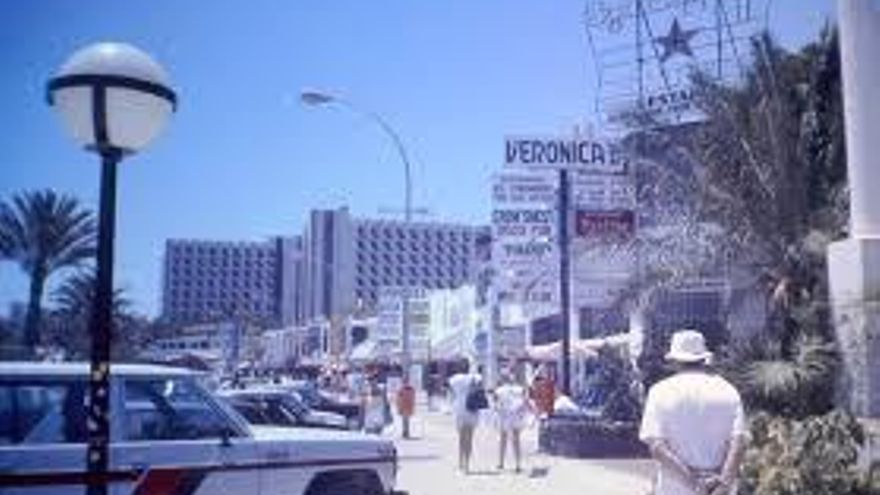From Fields to the ‘European Miami’

Until 1960, the southern coast of Los Cristianos was a flat expanse of tomato plants and tabaibas by the sea. Two decades later, catalogues from Spies, Neckermann, and Thomson proclaimed it to be “the European Miami”: Playa de las Américas.
This was not a name inherited or a quirk of the landscape, but rather a brand conceived by a Catalan promoter to market that volcanic plain as the closest gateway to the “New World”.
Mass Tourism
Until the 1960s, the coastal strip between Los Cristianos and the Barranco del Rey was an agricultural plain (Camisón and Llanos de Troya) covered with tomato and prickly pear plants.
Everything changed in 1962 when Catalan businessman Rafael Puig Lluvina purchased 2.3 million square meters to establish the first large sun and beach enclave in southern Tenerife.
To develop the resort, he created the company Playa de Las Américas S.A. (commercial registry TF-3395) and named the project after the same title.
The Name
- “New World” Effect in Promotion.- The agency responsible for selling the first packages in Scandinavia suggested a name that evoked modernity and exoticism. “Las Américas” called to mind the glamour of Miami Beach and the idea of travelling “across the pond” without leaving Europe, as explained by the corporate magazine of Viajes Insular celebrating its 60th anniversary.
- Historical Nod to Atlantic Routes.- The Cabildo of Tenerife supported the denomination as the Canary Islands had, for centuries, been the last European port on the way to America. The heritage blog of Spring Hoteles summarises it: the name pays homage to the Atlantic connection and “symbolises a multicultural destination born of transcontinental transit.”
When It Started Being Used
- 1964 – The Partial Plan “Playa de las Américas” was approved in Arona and Adeje.
- 1966 – The Tenerife Sol hotel opened. Brochures from Spies Rejser already advertised “Holidays in Las Américas”.
- 1973 – The BOE published the concession of desalinated water to the urbanisation “Playa de las Américas, S.A.”, consolidating the name in state documentation.
With the boom in the 1980s, the name leapt from tour operator catalogues to official maps: the National Geographic Institute incorporated “Playa de las Américas” into its 1:25,000 sheets (1987).
Today, it designates an urban continuum that extends over two municipalities (Arona and Adeje) and receives more than 1.5 million visitors a year.
















